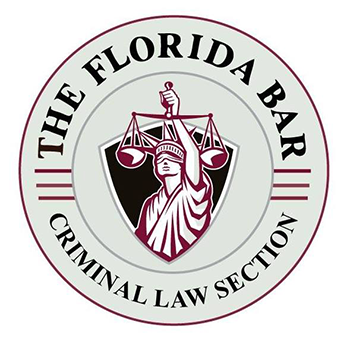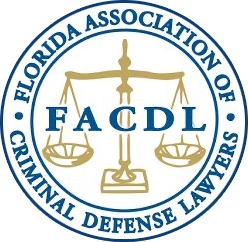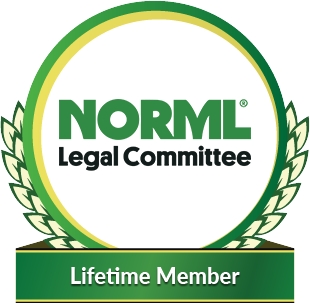Written Threat to Kill or Do Bodily Injury
In many stalking or cyber-stalking cases, the charges become more serious when it is alleged that a threat to kill or do bodily injury was communicated to the alleged victim in writing.
Similar to extortion cases, the State does not necessarily need to prove the defendant had the actual intent to do harm or the ability to carry out the threat. The crime is often listed as 83610-THRE1051 (FS), WRITTEN THREAT TO KILL OR DO BODILY INJURY or WRITTEN OR ELECTRONIC THREAT TO KILL OR DO BODILY INJURY (THRE1053).
Florida Statute Section 826.10 makes it a crime if a person “writes or composes and also sends or procures the sending of any letter or inscribed communication … to any person, containing a threat to kill or do bodily injury to the person to whom such letter or communication is sent….” § 836.10, Fla. Stat.
The penalties and punishments for threatening someone in writing or electronic communication can be severe. Section 836.10, F.S., is a second-degree felony punishable by up to fifteen (15) years in prison.
Attorney for Making Written Threats to Kill in Tampa, FL
If you were charged with making a threat in writing or online, contact a criminal defense attorney at Sammis Law Firm. Our offices are located in Tampa, Hillsborough County, FL. We have a second office in New Port Richey, FL.
We represent clients through the Tampa Bay area and all surrounding counties. We are experienced in fighting these cases aggressively.
The attorneys at Sammis Law Firm have successfully represented clients charged with serious crimes for making threats, including:
- allegations of sending harassing text messages;
- making written threats;
- publicly posting threats on social media sites;
- making verbal threats and verbal death threats;
- making digital threats; and
- threaten public officials.
In our cases, we fight for the best possible result to protect our client from the consequences of this serious second-degree felony charge. Call our attorneys at (813) 250-0500 today to discuss your case.
Jury Instructions for Written Threat to Kill
On December 5, 2013, the Florida Supreme Court approved the new standard jury instruction for crimes charged under Florida Statute Section 836.10.
One of the best ways to understand the statute is to read the standard jury instructions.
The new standard jury instructions state that in order to prove the crime of Written Threat to Kill or Do Bodily Injury, the prosecutor with the State Attorney’s Office must prove the following three elements beyond a reasonable doubt:
- The defendant wrote or composed a letter, electronic communication, or inscribed communication;
- The communication contained a threat to do bodily injury or kill the victim or any member of the victim’s family; and
- The defendant sent the communication or procured the sending of the communication to the same victim.
The first element lists three alternative prohibitions, “letter, inscribed communication, or electronic communication” that may form the basis of a criminal prosecution. See Macchione v. State, 123 So. 3d 114, 118 (Fla. Dist. Ct. App. 2013).
The standard jury instructions also provide that “it is not necessary for the State to prove that the letter, electronic communication, or inscribed communication had been signed.”
Related offenses to making written threats can include:
- stalking;
- cyberstalking;
- domestic violence battery;
- aggravated stalking after an injunction; or
- aggravated stalking with a credible threat.
Lesser included offenses can include assault. For cases involving a threat to a public servant, related offenses might include threatening harm to a public servant or person with whose welfare a public servant is entrusted.
Defenses to Threatening to Kill or Harm Another in Writing
Important defenses to these serious charges exist. Defenses often center around the Defendant’s denial that he or she sent the communications. These cases often involve electronic or digital communications that are difficult to trace back to the person accused.
For this reason, anyone accused of this offense should never make a statement to any law enforcement officer. Instead, call an attorney who can present your side of the story to law enforcement.
Another type of defense might involve showing that the communications were a hoax or joke with no actual intent to threaten anyone. A threat often involves the actual ability to carry out the action immediately.
Many of these statements are not threats because the statement that the act will be carried out is contingent on some future event and not intended to be an immediate action.
Making Digital Threats Electronically or in Cyberspace
Traditionally, written threats were made in a letter. Today, written threats are often made via e-mail or on social media sites such as Facebook, Twitter, MySpace, YouTube, or LinkedIn. These types of threats are often called digital threats.
The courts in Florida have interpreted the statute broadly to include even written threats made on the Defendant’s Facebook page that the alleged victim subsequently viewed. See O’Leary v. State, 109 So. 3d 874, 877 (1st DCA 2013).
In the O’Leary case, the court reasoned that “when a person composes a statement of thought and then displays the composition in such a way that someone else can see it, that person has completed the first step in …[the] definition of “sending.”
When the threatened individual, or a family member of the threatened individual, views and receives the thoughts made available by the composer, the second step in the …definition is completed. At that point, the statement is “sent” for Section 836.10, Florida Statutes.
The O’Leary court also cited a law review article by Jacqueline D. Lipton, Combating Cyber–Victimization, 26 Berkeley Tech. L.J. 1103, 1127–28 (2011), explained that Internet technologies “generally do not involve communications sent directly to another.
Rather, communications are posted for the whole world to see, or, in a closed network for a particular community to see, such as a community of ‘Facebook friends.’ ” Id at 877.
Definitions in Cases for Making Written Threats
Florida law provides for certain definitions related to sending written threats. The term “inscribed communication” is defined as any communication that is written or printed.
The term “to procure” means to induce, prevail upon, persuade, or otherwise cause a person to do something. This definition for the term “to procure” is the same definition used in the jury instructions for manslaughter.
The act of “sending” under the statute involves not only depositing of communication in mail or some other form of delivery, but also encompasses receipt of communications by the person being threatened. State v. Wise, 664 So.2d 1028 (2nd DCA 1995), rehearing denied.
History of Florida’s “Making Threats” Statute
In 1913, the Florida Legislature enacted the crime of making “written threats to kill or do bodily injury” under Florida Statute 836.10, F.S.
Written threats were originally listed to written words using “pen and paper,” the newspaper, or radio.
The history of Florida’s statute for making threats to do bodily injury or kill includes four amendments since its original enactment. The statute was amended for the fourth time in October of 2010.
The Fourth Amendment significantly expanded the crime to include “electronic communication.
Today, crimes for making a written threat to do bodily injury or kill under Florida Statute 836.10, F.S., prohibit a person from:
- Writing or composing and sending to any person:
- A letter;
- Inscribed communication; or
- Electronic communication;
- Containing a threat to kill or do bodily injury to:
- The person to whom the letter or communication was sent; or
- Any member of the person’s family.
On December 5, 2013, the Florida Supreme Court noted that there is no statutory definition for the term “electronic communication.”
Threats to injure or kill are not constitutionally protected. Therefore, the defendant’s First Amendment rights are not generally compromised by laws prohibiting making written threats to do bodily injury or kill. Other important defenses exist, however, to fight these types of charges.
Where Can Written Threat Cases Be Prosecuted?
The term “venue” refers to the place where the criminal charges can be prosecuted. The venue in written threats cases may be proper in more than one place.
The venue may be proper in:
- the county where the communications were sent; or
- the county where the communications were received.
Therefore, if the defendant lives out of the State of Florida but directs the communication at a victim living in Florida, the crime might be prosecuted in Florida. The reason for allowing the prosecution in either place is because an act constituting part of the offense occurred in both places.
The Act of Sending Written Threats to Kill on Social Media
The act of “sending” under the statute has two requirements.
First, the person accused of the crime must actually send the communication to a particular person.
Second, the communication must be received by the person being threatened. Prosecutors often have a difficult time proving the threat when the target of the threat is not a particular person, but is more random in nature. Threats to kill on social media are particularly difficult to prove.
As more people use the internet to communicate with each other, written threats are often made on social media sites and other apps. The most commonly used social media sites include Facebook, Instagram, Pinterest, LinkedIn, and Twitter.
Many courts have found that publicly posted threats on social media sites that are communicated through school officials, rather than sending them directly to a student or school official, are too far removed to support a conviction under 836.10, F.S. for making a written threat.
The courts have recognized the difficulty of applying the current statute to modern forms of communication via social media.
The courts have generally recognized that threats made on social media fall outside the requirements of the statute which require the threatening communication to be sent directly to a specific person who receives the threat.
Charges under Section 826.10 might involve a student is accused of making a threat on social media to commit some random act of violence at his or her school using a bomb or firearm.
Related charges include a making a threat of death or serious bodily injury to a public official under Section 836.12(2), F.S., a misdemeanor in the first degree for a first offense.
Making a false report of a bomb, explosive, or weapon of mass destruction is charged under Section 790.163, as a third degree felony.
Defending Crimes for Making a Written Threat
If you were charged with the serious felony offense of making threats in writing or through electronic communications or e-mail, then contact an experienced criminal defense attorney at the Sammis Law Firm.
We are experienced in representing clients on various stalking and cyber-stalking cases, especially in cases involving allegations of domestic violence.
A violation of Florida Statute Section 836.10, F.S., for making a threat in writing or electronically is punishable as a second-degree felony, punishable by up to 15 years in prison and a fine of up to $10,000. ss. 775.082, 775.083, and 775.084, F.S.
Call us today at (813) 250-0500 to discuss your case if you were arrested in Florida, including Hillsborough County, Pinellas County, Pasco County, and Hernando County, FL.
Jason D. Sammis last updated this article on Wednesday, April 12, 2022.














